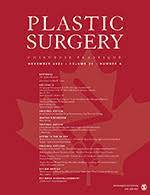
Early Protected Movement vs. Splinting for Fifth Metacarpal Neck Fracture

Early Protected Movement vs. Splinting for Fifth Metacarpal Neck Fracture
Prospective Multicenter Randomized Controlled Trial Comparing Early Protected Movement and Splinting for Fifth Metacarpal Neck Fracture
Plast Surg (Oakv). 2022 Feb;30(1): 6-15.Did you know you're eligible to earn 0.5 CME credits for reading this report? Click Here
Synopsis
Thirty-seven patients with 5th metacarpal neck fractures were randomized to receive elastic bandaging with early protective movement (n=16) or splinting (n=21). The outcomes of interest included the Brief Michigan Hand Questionnaire (bMHQ) and grip strength, as well as cost of intervention. Outcomes were assessed up to 12 weeks follow-up. No significant differences were observed between the two gr...
To view the full content, login to your account,
or start your 30-day FREE Trial today.
FREE TRIAL
LOGIN
Forgot Password?
Explore some of our unlocked ACE Reports below!

Learn about our AI Driven
High Impact Search Feature
Our AI driven High Impact metric calculates the impact an article will have by considering both the publishing journal and the content of the article itself. Built using the latest advances in natural language processing, OE High Impact predicts an article’s future number of citations better than impact factor alone.
Continue



 LOGIN
LOGIN

Join the Conversation
Please Login or Join to leave comments.